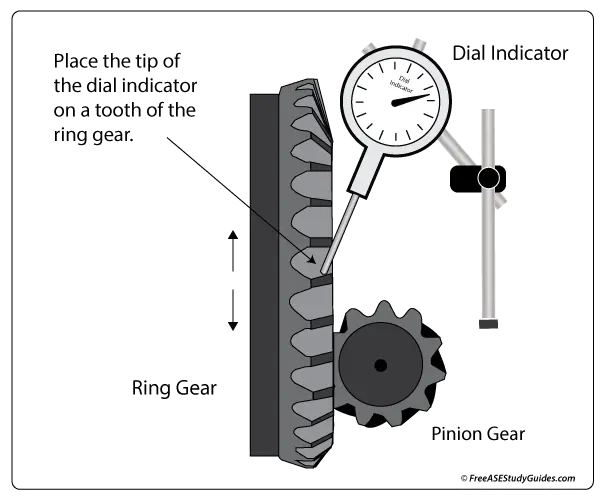ASE A3 Manual Drive Train and Axles
11. A manual transmission makes a grinding sound at the front of the transmission with the engine running and the clutch fully engaged. Which of the following is causing this noise?
- A. A faulty input shaft bearing.
- B. A faulty output shaft bearing.
- C. A faulty clutch release bearing.
- D. A faulty pilot bearing.
12. Which of the following are placed at the ends of the transmission shafts and require a slight preload?
- A. Sealed ball bearings.
- B. Thrust bearings.
- C. Tapered roller bearings.
- D. Needle bearings.
13. A 4WD vehicle makes a popping sound when accelerating from a stop. This sound only occurs in 4WD. Which of the following is causing this condition?
- A. Low engine vacuum.
- B. A faulty shift motor.
- C. A stretched transfer case chain.
- D. A faulty relay.
14. A vehicle has an excessive vibration at highway speeds. Technician A says to use a dial gauge to measure the driveshaft for runout. Technician B says to use a dial gauge to test the driveshaft companion flange for runout. Who is correct?
- A. Technician A
- B. Technician B
- C. Both A and B
- D. Neither A or B

15. The measurement taken in the illustration above is checking:
- A. Ring gear runout.
- B. Pinion bearing preload.
- C. Ring gear backlash.
- D. Ring gear tooth contact pattern.